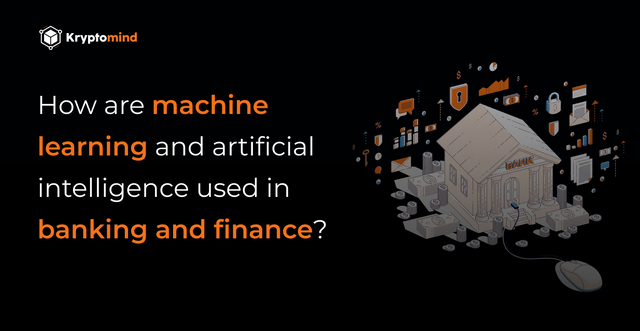
The banking and finance industry is transforming due to the emergence of machine learning (ML) and artificial intelligence (AI). ML and AI are helping financial institutions become more efficient and improve customer service while reducing costs. Financial institutions can use ML and AI to automate processes, detect fraud, and personalise customer experiences. This article will delve into the usage of ML and AI in banking and finance and the advantages that may arise from implementing this technology.
What are machine learning and artificial intelligence?
ML is a branch of AI that enables computers to learn and adapt without explicit programming. ML uses algorithms to process data and identify patterns, allowing it to make decisions and predictions based on its observations. AI, on the other hand, is the use of computers to simulate human intelligence. With the help of AI, machines can accomplish tasks that typically require human intelligence, such as natural language processing (NLP) and facial recognition.
Applications of AI and ML in banking and finance:
Banking and finance institutions are using ML and AI to improve their operations. ML and AI help automate processes such as customer onboarding and loan applications, detect fraud, and personalize customer experiences.
Automation:
Automation is one of the primary applications of ML and AI in banking and finance. Automating processes such as customer onboarding and loan applications can save time and money for both the customer and the financial institution. It can help financial institutions become more efficient, as they can process applications faster and with fewer errors.
Fraud Detection:
In ML and AI, large data sets are used to train machine learning algorithms, which analyze customer data to identify suspicious activity. These same algorithms, through AI applications, are applied in cybersecurity to detect and classify malicious activity. Once trained, the algorithm helps to scrutinize new data and identify patterns that may indicate security threats.
Chatbots:
AI chatbots and virtual assistants are beneficial in the banking and financial industries to improve customer service. These AI-powered systems can handle a broad spectrum of customer demands and enable 24/7 access to account balances, transactions, bill payments, and financial information.
Personalization:
ML and AI can also be used to personalize customer data and provide personalized recommendations, such as credit cards and loans tailored to the customer's needs, which is possible with the help of AI. It provides customers with personalized advice and services.
Automation:
AI-enabled technologies can take over numerous laborious and monotonous jobs that are usually done by humans, such as entering data and ensuring compliance. It allows financial institutions to operate more efficiently and reduce costs. Additionally, AI-based algorithms can automate trading decisions, allowing financial institutions to make faster and more informed trades.
Benefits of ML and AI in Banking and Finance:
ML and AI are helping banking and finance institutions become more efficient and improve customer service and reduce costs. ML and AI can automate processes, detect fraud, and personalize customer experiences. Furthermore, ML and AI can help financial institutions gain insights into customer behaviors and preferences.
Financial institutions can use machine learning and AI to analyze large amounts of data and identify patterns that inform more accurate decisions. AI is used to automate compliance processes and identify any potential compliance breaches. It allows financial institutions to meet regulatory requirements and avoid penalties.
Banks use machine learning algorithms to analyze financial markets and identify patterns that inform investment decisions. It allows financial institutions to provide more personalized investment advice to their clients and improve the performance of their portfolios.
Conclusion:
The integration of ML and AI in the banking and finance sector brings several benefits to the table. From improved risk management to enhanced fraud detection and increased automation, these technologies can help financial institutions operate more efficiently, make more informed decisions, and improve customer service. AI can also improve compliance and cyber security, making the financial industry more secure and trustworthy.